Labeling a particular novel as genre fiction is frequently seen as damning a book as formula fiction. Generally though, formula fiction is labeled as such because of the reuse of plot, plot devices and stock characters in a slavish way so that the outcome of the story is essentially predictable. It can be argued these days that mystery genres represent general boundaries or categories of setting and character types distinct enough to hold up to a cursory search for something enjoyable to read. There is plenty of room for escapist fiction in modern life and it is possible for a book to both formulaic, well-written, and entertaining. In this light, Terry Pratchett's Discworld novels are one of this writer's personal favorites. As should be expected, many authors are produce books that stradle one or more fiction genres without sacrificing popularity or literary recognition. A good rule of thumb to use in choosing a book is if a particular writer's work is entertaining, cross-genre novels by that author will be just as worth while. With this in mind, here are some brief, arguably subjective, descriptions of sub-genres within or often associated with mystery fiction.
In general, the basic flavors of modern mysteries include crime fiction, detective fiction, thriller fiction, and spy and espionage fiction. These categorizations are broad enough, if not especially systematic, that they are frequently used for marking shelf sections in bookstores and libraries as well as sub-sections of publisher catalogs. Of course the subjectivity involved in sorting fiction by type leads to an almost infinitely fine gradiation of potential sub-sub-genres. Nevertheless, like the devising of sub-genres, the reason why a book is assigned to any one genre or the other is subjective and any novel that can be found in a bookshop in a particular section of shelving is arguably 'in' that genre.
![]() Mystery fiction, aka whodunit, can broadly be described as stories with involved plots in which characters are trying to discover a vital missing piece of information which is kept hidden from them, and usually the reader also. Kept hidden that is, until the final climax of the novel. Most frequently this genre label is precieved as synonymous with detective fiction and the 'whodunit'.
Mystery fiction, aka whodunit, can broadly be described as stories with involved plots in which characters are trying to discover a vital missing piece of information which is kept hidden from them, and usually the reader also. Kept hidden that is, until the final climax of the novel. Most frequently this genre label is precieved as synonymous with detective fiction and the 'whodunit'.
 Whodunit or whodunnit
Whodunit or whodunnit
This genre, a simplification of "Who done it?," is associated with the "Golden Age" of detective fiction generally considered to have run from the 1920s through the 1940s. Generally, this genre novel is a complex, plot-driven detective story where the puzzle is the most important focus of the author's efforts, frequently at the cost to other fiction elements such as character development. Usually, the progression of the story provides the reader with all the clues necessary to identity of the perpetrator of the crime. A this sub-genre became more established, authors emerged who were especially skillful at leading their readers to the wrong conclusion and then revealing the least likely suspect as the villain in a completely plausizle way. This detective genre type usually has an eccentric amateur or semi-professional detective in pursuit of the criminal. Some of the most recognized writers in this style are Agatha Christie, Dorothy L. Sayers, S. S. Van Dine, Ellery Queen and Rex Stout. There are 'English' style and 'American' style variants of this type. The locked-room mystery is a specialized type of a whodunit.
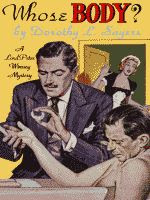 'English' style Whodunits or 'Cozies' (see also Golden Age whodunits)
'English' style Whodunits or 'Cozies' (see also Golden Age whodunits)
A variant of the whodunit detective mystery. The English style is noted for an inclination towards the use of a gifted amateur investigating the murder instead of an official detective or police officer. Some of the most recognized writers in this style are Agatha Christie, Dorothy L. Sayers, Josephine Tey, Michael Innes, Nicholas Blake, Christianna Brand and Edmund Crispin. Notable American writers who mimicked the English style include S. S. Van Dine, John Dickson Carr, and Ellery Queen.

'American' style Whodunits (see also hardboiled)
A variant of the whodunit detective mystery. The authors who have had this label applied to them generally wrote a consciously American variant to the English style. Some of the most recognized writers in this style are Rex Stout, Clayton Rawson and Earl Derr Biggers.
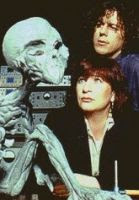 Locked room mystery (aka impossible mysteries)
Locked room mystery (aka impossible mysteries)
A whodunit style detective mystery where a murder or other crime seems to have been committed in impossible situations. These situations include conditions in which no one could have entered or left the scene of the crime but the death could not have been a suicide. This style of mystery usually follows the conventions of classic detective fiction so that the reader is provided with enough clues to solve the puzzle before the story's dramatic denouement. There are a limited number of suspects who are usually provided with apparent alibis as well as probable motives for the crime. The catch is that the situation set up by the author allows none of the suspects to have been able to enter or leave the room unseen. A key element to this style is that there is always a rational explanation for an apparently impossible event. he British TV "Jonathan Creek" mysteries are a perfect example of this style. Notable writers of this detective story variant include Ed Hoch, Paul Halter, Arthur Porges, Martin Meroy, Boileau-Narcejac, Akimitsu Takagi and Soji Shimada.
 English country house detective mystery
English country house detective mystery
English country house mysteries take place in an English Country House, are peopled by upper class British suspects, include a murder or at least a crime, reason is enough to discover their solution given the clues provided, and the identify of the criminal is revealed very near to or actually at the end of the story. Robert Altman's "Gosfard Park" is a perfect example of this style. This film is a wonderfully crafted homage to the country house mystery while also functioning as an effective critique of English class consciousness. Notable authors writing in this style include Ernest Bramah, H.C. Bailey, Edgar Wallace, Ethel Lina White, Max Pemberton and Robert Barr.
 The Golden Age Whodunit (see also English-style Whodunits)
The Golden Age Whodunit (see also English-style Whodunits)
Golden Age detective fiction is generally considered to have been established between the World Wars. It is a style of mystery fiction that most justifibly could labled escapist or formula fiction, especially in the hands of a less skillful writer who slavishly follows convention. Keep in mind that this style of mystery emerged during the Great Depression and political turmoil of the period. The British variant of Golden Age Whodunits show a tendency towards the use of a gifted amateur solving the mystery instead of a policeman. Both the American and British variants of this style frently involve a crime committed in a closed environment by one of a limited number of suspects, essentially identical to the locked room or impossible mystery story.

The Historical Whodunnit
This fiction sub-genre straddles both the broad category of detective fiction as well as historical fiction. It is a sub-genre whose rise in poplarity was heavily invluenced by the success of Ellis Peter's Brother Cadfael novels and Umberto Eco's "The Name of the Rose."

Detective fiction
Detective fiction is a very broad genre type that has become almost synonymous with mystery. These stories relate the solving of a crime, usually one or more murders, by a protagonist who may or may not be a professional investigator. This large, popular genre has many subgenres, reflecting differences in tone, character, and setting.
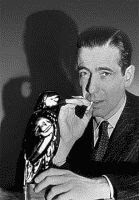
Hardboiled detective fiction (see also American style whodunnits)
These books are have been called American hard-boiled fiction because the style originated among the American writers Raymond Chandler, Dashiell Hammett and Mickey Spillane. These three are widely acknowledged writers whin this broad stylistic type mystery fiction, but the attractiveness of its super-realistic, cynical style has lead to its globalization.
 Inverted detective fiction (aka 'howshecatchem')
Inverted detective fiction (aka 'howshecatchem')
These stories with the guilty person and the crime revealed to the reader/audience. The story then follows the investigator's efforts to find out the truth while the criminal at he same time is attempting to prevent being discovered. Reader and viewer interest is maintained by a skillful development of how the truth is uncovered. The Columbo TV movie series is a classic example of this kind of detective story. For a bit of trivia, the first use of 'howcatchem' is attributed to TV Guide.
 Crime fiction
Crime fiction
Crime fiction stories, centered on criminal enterprise, are told from the point of view of the perpetrators. They range in tone from lighthearted "caper" stories to darker plots involving organized crime or incarcerated convicts. This is one of the more subjective sub-genre labels because it is quite frequently is used as an especially broad categorization that includes mysteries and thrillers within it.
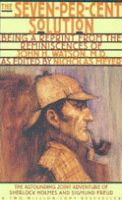 Pastiche crime fiction
Pastiche crime fiction
A pastiche is a piece of writing in which the style is patterned completely upon an original and usually quite famous work, but with no parody or ridicule intended or involved. Examples of this include the Sherlock Holmes stories written by John Dickson Carr and Arthur Conan Doyle, and E. B. Greenwood. "The Seven Percent Solution" by Nicholas Meyer, which takes a modern approach to Holmes' cocaine addiction, is a particularly interesting vairant on this style.
 Parody and spoof crime fiction
Parody and spoof crime fiction
The idea is to exaggerate the most noticeable features of an original, very well known and recognizable mystery writer or style. Sometimes this style intentionally mocks the original, but most of the time the effort is to pay homage to the original while at the same time producing a funny take-off that is especially appealing to fans of the original. The film 'Murder by Death' is Neil Simon's spoof of many of the best-known whodunit sleuths. It makes particular fun of the relationship between each detective and his or her sidekick.
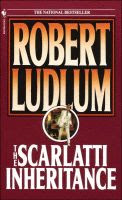 Thriller fiction
Thriller fiction
The thriller style of fiction is built around providing readers with a roller coaster ride of strong feelings of suspense and danger (i.e., the 'thrill' in thriller). Writers amplify this effect by focusing their thriller plots around a high-stakes hunt, chase, or a race against time. The resulting feelings of suspense are typically seasoned with elements of espionage, crime, medicine, or technology. Sub-genres of thriller fiction frequently overlap into mystery, horror, and action-adventure fiction but the wide variety of modern thriller subtypes is primarily attributed to the angst associated with the complexity of modern life. These various sub-genres most frequently are listed as including spy thrillers, political thrillers, military thrillers, conspiracy thrillers, technothrillers, eco-thrillers, legal thrillers, forensic thrillers, psychological thrillers, horror thrillers, disaster thrillers, serial killer thrillers, romantic thrillers, supernatural thrillers, action thrillers, and crime thrillers. Several qualities usually distinctly set thrillers apart from mystery fiction. One of these are the settings chosen, usually exotic ones such as a foreign city or else an exotically remote location. Thrillers also differ from mysteries in that the main character's occupation is essentially an adventurers, someone who is accustomed to a dangerous life such as spy, mercanary, seamen, pilot, etc. A notable and fairly common variety of thriller is an ordinary person drawn into a critical situation simply by accident. A perfect example of this is the film "North by Northwest" by Alfred Hitchcock. Unfortunately, the market for modern thrillers is so great, that the quality of writing varies widely. Some recommended writers known for the quality of their work include John Le Carre, Robert Ludlum, Eric Ambler, David Morrell, Frederick Forsyth, Dan Brown, James Phelan, Tom Clancy, Michael Crichton, Ian Fleming, Ken Follett and Alistair MacLean.
 The Caper story
The Caper story
The caper story is a subgenre of crime fiction. Most caper stories unually involve thefts or swindles or, occasionally, kidnappings. The stories are told from the point of view of the caper perpetratators in full view of the reader. Activities of the police trying to prevent or solve the crimes are sometimes included in the story line but, if they are, they are usually a very minor part of the story. Caper stories differ from more typical crime stories because their tone includes elements of humor, adventure, and/or unusual intelligence and audacity by the perpetrators. A couple of examples of classic caper stories are the film "The Sting," the novel "Get Shorty" by Elmore Leonard, and the short story "The Ransom of Red Chief" by O. Henry. Other noted writers within this sub-genre are Leslie Charteris, Donald E. Westlake, John Godey, Peter O'Donnell, Eric Ambler, John Boland, Walter Wager, and Michael Crichton. Notable ilms in this sub-genre include "Rififi," "The Thomas Crown Affair," "The Italian Job," "Kelly's Heroes," "Bank Shot," "The Hot Rock," "The Castle of Cagliostro," "The Great Muppet Caper," "Hudson Hawk," "Lock, Stock and Two Smoking Barrels," and "Three Kings."
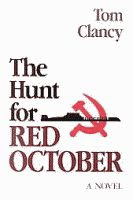
Suspense fiction (see thrillers)
This genre is more frequently called the thriller. Modern thrillers are arugably not directly associated with mystery fiction as a genre, but so many contemporary authors write books that straddle the thriller and mystery genres that it is worth considering its association with mysteries.
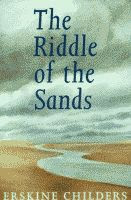
Spy fiction
Spy or espionage fiction is a sub-genre of the thriller that is usually synonimous with the political thriller and spy thriller. Some notable and less well known writers in this style include Robert Erskine Childers, John Buchan, early Manning Coles, Charles McCarry, Joseph Finder, Gayle Lynds, Daniel Silva, and Charles Cumming.

Psychological suspense fiction
A sub-genre of thriller fiction in which the main conflict of the story is mental and emotional instead of physical. Notable writers of this style of fiction include Patricia Highsmith (The Talented Mr. Ripley, Strangers on a Train), Simon Brett, and Stephen Dobyns.
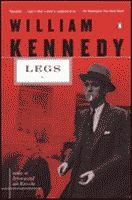
The criminal or gangster novel
Some readers consider this a separate sub-genre of crime novels or thrillers. Novels in this sub-genre are told from the point of view of criminals. Frequently, Mario Puzo's 'The Godfather' is used as a the most widely recognized example of this type of fiction. This is probably one of the most subjective labels that can be placed on a book but it is easy to argue that it is a good match for most novels featuring the mafia. Recommended works include William Kennedy's 'Legs' and Ira Wolfert’s 'Tucker’s People.'
Home
Older Article: Mystery writer Michael Connelly, master of 'hard-boiled' mysteries
Modern Mystery Genres, proliferation in popular fiction styles by Steven Williams is licensed under a Creative Commons Attribution-Noncommercial-No Derivative Works 3.0 United States License.
Permissions beyond the scope of this license may be available by contacting Steven Williams through Bookmarc's BookmarcsOnline.
